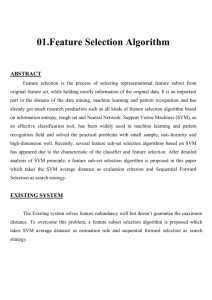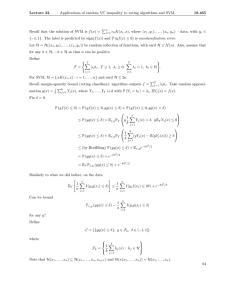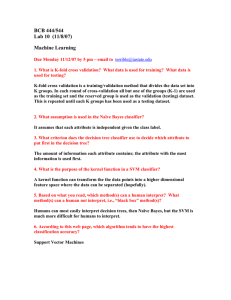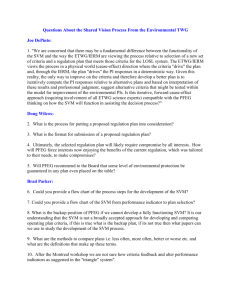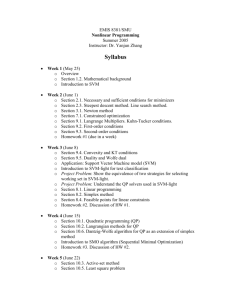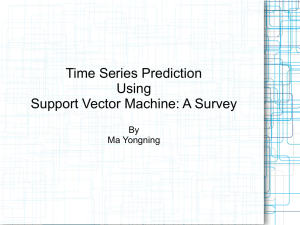Support Vector Regression
advertisement
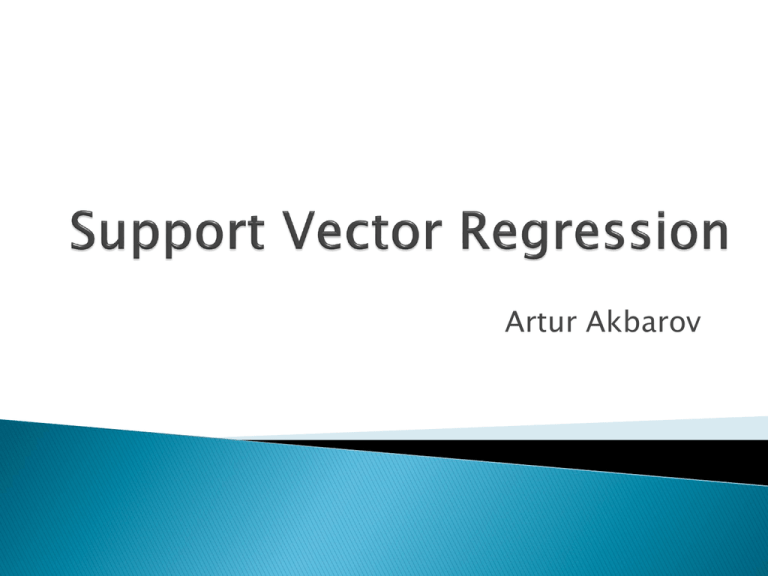
Artur Akbarov A tutorial on support vector regression By Smola, A.J and Schölkopf, B. Statistics and Computing, 14, pp. 199-222, 2004 SVM is applied in many different fields including bioinformatics, epidemiology, finance, economics etc. Essentially, it can be applied wherever there is a problem of classification or prediction. Source:http://www.saedsayad.com/support_vector_machine_reg.htm Source:http://www.saedsayad.com/support_vector_machine_reg.htm y w ( x) b Source:http://www.saedsayad.com/support_vector_machine_reg.htm Linear SVR: Non-linear SVR: Gaussian radial basis function: 2 K( xi , x j ) exp( xi x j ) Polynomial K( xi , x j ) ( xi x j ) d Model fitting: ◦ Training set ◦ Validation set – fit the model – predict using the fitted model, choose the model with minimum prediction error. Model testing: ◦ Test set – examine the prediction error (model performance, compare different prediction methods) Training and validation sets: ◦ Fixed split ◦ Random split ◦ Cross-validation Split the data into n number of subsets, train on n-1 subsets, validate on the remaining subset, loop over all subsets. Leave-one-out cross validation. LIBSVM – SVM library in different languages. Weka – data mining tools. R package - “e1071” install.packages(“e1071”) library(“e1071”) model<-svm(data=D, formula=Y~X1+X2) model<-svm(y=Y,x=X) Y_fit<-predict(model, X) Y_hat<-predict(model, X_new) Other SVM parameters for the svm() function: ◦ epsilon = 0.1 ◦ cost = 1.0, which is C ◦ kernel =“linear”, “polynomial”, “radial”, ”sigmoid”. best.svm() function uses grid search to find the optimal values for SVM parameters. model<-best.svm(x=X, y=Y, tunecontrol=tune.control(cross=5), cost=c(1:10),epsilon=c(0.05,0.10)) Thank you for your attention




